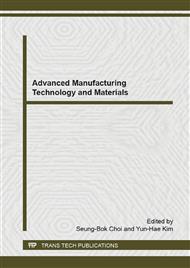p.89
p.93
p.97
p.102
p.109
p.113
p.117
p.121
p.125
Molecular Dynamics Study on the Generation of Single-Walled Carbon Nanotubes Junction by Direct C60 Bombardment
Abstract:
Carbon nanotubes have been considered as promising materials for applications of nanodevices. As building blocks, carbon nanotube junctions formed by carbon-carbon covalent bonds are desired nanostructures for carbon nanotube based materials, however the formation of the junctions made of C-C bonds is still quite challenging. In this paper, a molecular dynamics study on the generation of single-walled carbon nanotubes junction by direct C60 bombardment is conducted. Results show that carbon nanotube junctions can be formed by direct C60 bombardment, however the structure of the formed junction is similar as the riveted structure in some case and the C60 bombardment may lead to uncontrollable bonding disorder in the joints.
Info:
Periodical:
Pages:
109-112
Citation:
Online since:
January 2015
Authors:
Keywords:
Price:
Сopyright:
© 2015 Trans Tech Publications Ltd. All Rights Reserved
Share:
Citation:


